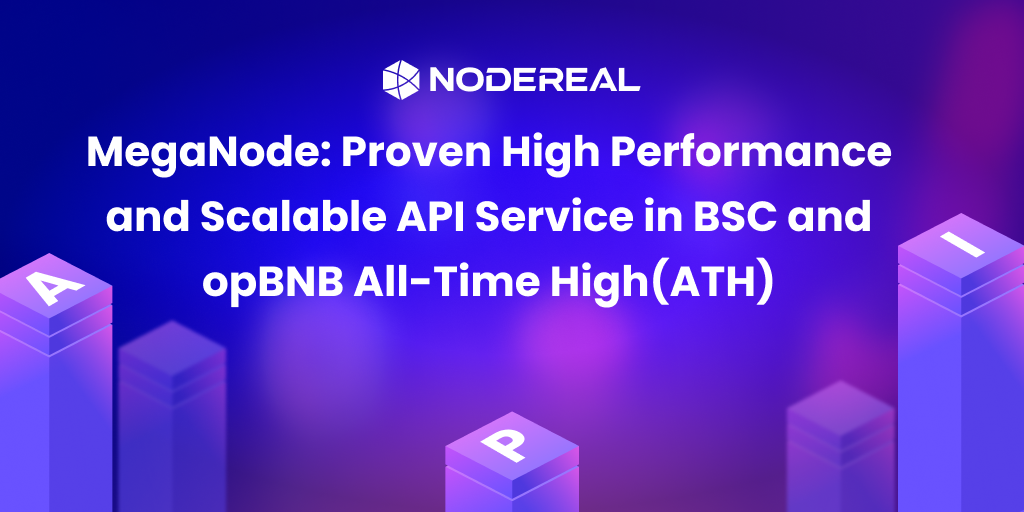Introduction
The recent surge in Inscriptions, akin to a digital storm, has served as a real performance test for blockchain infrastructures globally. BNB Smart Chain (BSC), a layer (L1) blockchain, along with its Layer 2 rollup (opBNB), admirably rose to the challenge, setting new benchmarks for daily transactions.
The Inscription hype has firmly established BSC and opBNB as leading players in the blockchain space, demonstrating their capacity to not only survive but also thrive under the most demanding network conditions.
On December 7th, BSC reached an all-time high (ATH) by processing an unprecedented 32 million transactions in a single day.
Source: bscscan
Similarly, opBNB, BNB Chain's optimistic rollup layer, recorded a staggering 71 million transactions on December 28th.
Source: opbnbscan
The architecture of the MegaNode and optimizations played an instrumental role in managing high traffic. Its efficiency and flexible scalability capacity were crucial in ensuring the stability of the BNB Chain ecosystem during periods of heightened demand. In this blog, we will share more details on MegaNode Performance during the BSC/opBNB ATH.
Super Fast and Scalable RPC Service on MegaNode
MegaNode efficiently managed RPC requests and queries during the All-Time High (ATH) period. In these moments of peak activity, MegaNode seamlessly processed 300,000+ queries per second (QPS).
Simultaneously, it's possible to observe the Transactions Per Second (TPS) on the BNB Smart Chain (BSC) during this interval. Take eth_sendRawTransaction as an example, the single request API reached around 1,400.
Further investigation into API response times reveals that, even at peak times, the responses were smooth and efficient. The Error rate keeps low and stable during the peak hours.
Normally, API response times tend to increase under heavy load. However from the diagram below, following scaling efforts, there was a rapid decrease in response times, ensuring the overall process remained fluid and effective.
While a normal node might take hours or even days to synchronize with the latest block, MegaNode accomplishes this task within minutes. This rapid scaling is crucial for maintaining the reliability and efficiency of the RPC service, ensuring timely and accurate data processing and transactions in the high-performance blockchain network.
The Critical Role of Scalable RPC Services during Transaction Surges
During times of heightened transaction activity, the need for a scalable, high-performance RPC service with optimized Command Query Responsibility Segregation (CQRS) becomes critical. Although the BNB Chain manages large traffic volumes effectively, such surges can still challenge various applications, notably blockchain explorers. These explorers often encounter significant delays due to the performance limitations of in-house maintained RPC nodes. In high-traffic scenarios, the efficiency of RPC queries suffers, primarily because block synchronization demands a substantial share of computing resources and the system lacks the necessary scalability. Therefore, for maintaining optimal performance in blockchain applications, it is vital to employ a dedicated RPC service that is finely tuned for efficiently querying on-chain data.
MegaNode's Scalable Architecture
With a globally distributed network of API gateways across key regions such as APAC, EU, and US, MegaNode ensures efficient load distribution and high availability. Each gateway is bolstered by a coordinator, who oversees a fleet of stateless virtual nodes. Different from traditional RPC node, which takes hours even days to spin up and catch up with the latest state, the shared global state of these virtual nodes allows for rapid scalability when traffic increases, enabling them to adeptly handle increased volumes of transactions and queries during peak times, such as the inscription hype on BNB Chain.
Regional Indexers for Swift Performance:
MegaNode has deployed regional indexers in the APAC, EU, and US. The local solution to a global challenge ensures users experience minimal latency in data retrieval and transaction indexing.
Global Height and Blockhash Synchronization
A critical aspect of MegaNode's robustness is its global maintenance of height and block hash information. By synchronizing this data across its entire network, MegaNode ensures that all nodes have a consistent and accurate view of the blockchain. This is particularly vital for explorers like BSCTrace and opBNBScan, which rely on up-to-the-second information to provide accurate blockchain analytics and transaction tracking. It enables real-time and historical data to be retrieved with high accuracy, providing a reliable audit trail and enhancing trust in the blockchain's data integrity.
High-Performance Explorers Empowered by MegaNode
Powered by NodeReal, BSCTrace, and opBNBScan, the two primary explorers of BNB Chain, have demonstrated exceptional resilience. This is driven by MegaNode, which not only provides the standard RPC API but also provides the indexed data for explorers.
Conclusion
In conclusion, MegaNode's adept handling of the unprecedented traffic surge on BNB Chain, particularly on BSC and opBNB during the Inscription hype, highlights its crucial role in boosting blockchain efficiency and resilience. Its state-of-the-art architecture, marked by fair query distribution, adaptable virtual nodes, and regional indexers, enabled swift response times and stable performance, even under extreme demand. This success not only cements BNB Chain's leadership in the blockchain arena but also underscores the value of cutting-edge infrastructure in catering to the increasing needs and intricacies of blockchain networks.
Looking ahead, the MegaNode team is ambitiously working towards supporting an impressive 200M gas per second on the opBNB network by optimizing the transaction queue and broadcasting mechanism, a move that aims to facilitate up to 10,000 TPS. Concurrently, MegaNode is targeting a capacity of 1,000,000 QPS. His forward-thinking approach and continuous improvement demonstrate MegaNode's commitment to evolving and scaling in line with the dynamic demands of blockchain technology.

